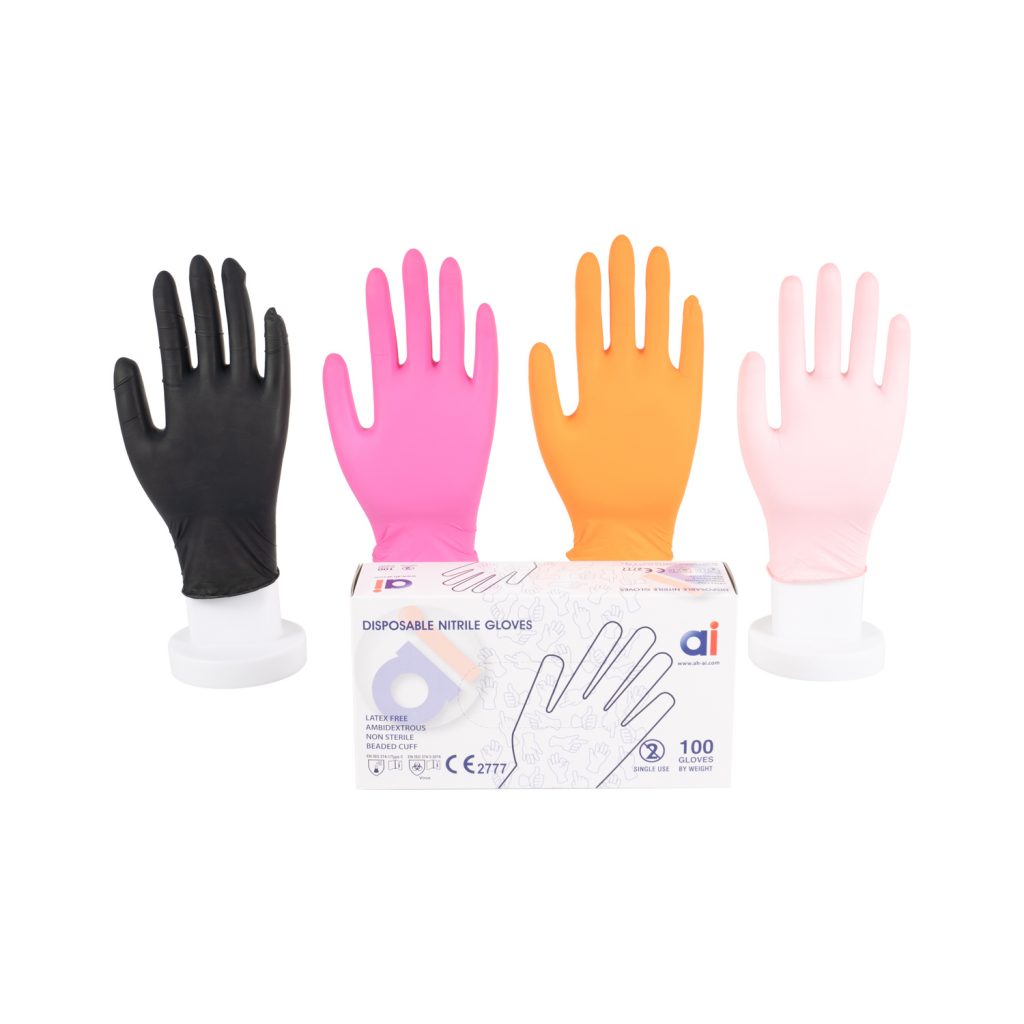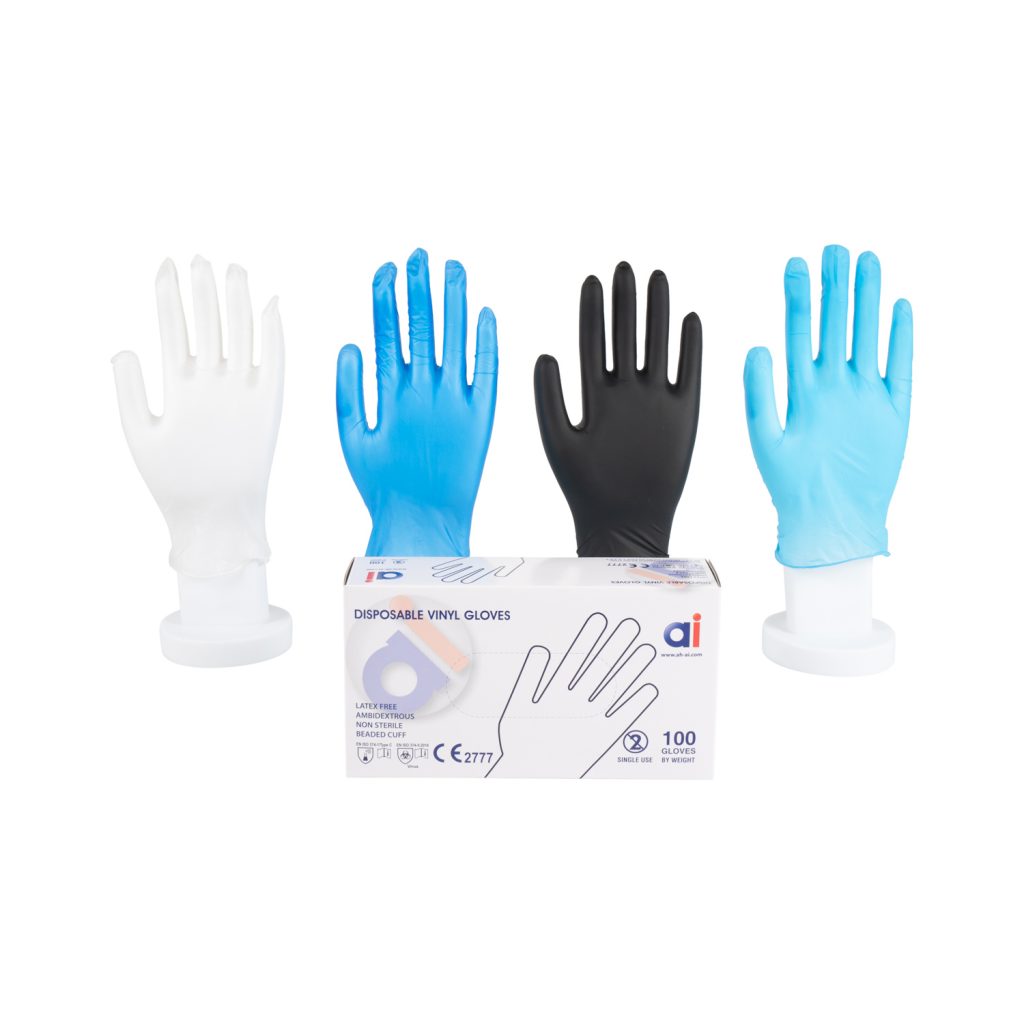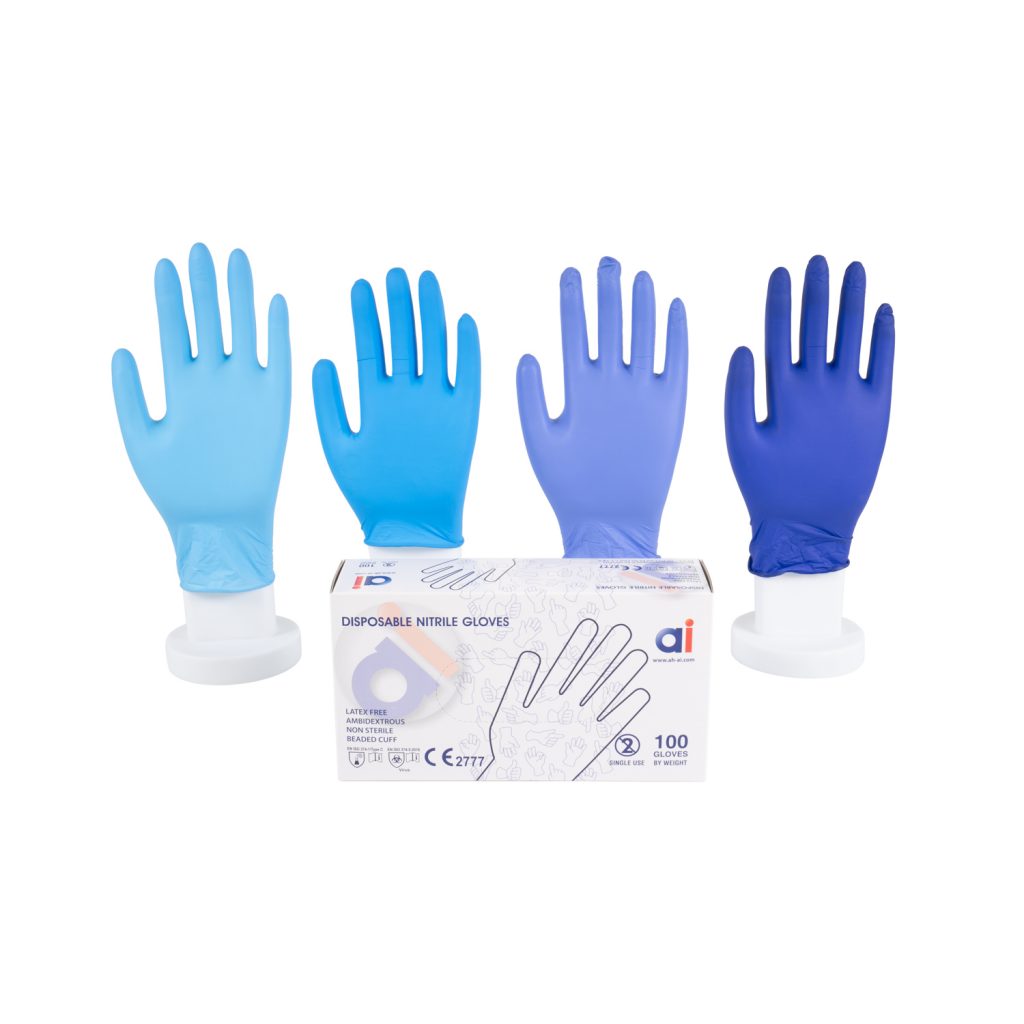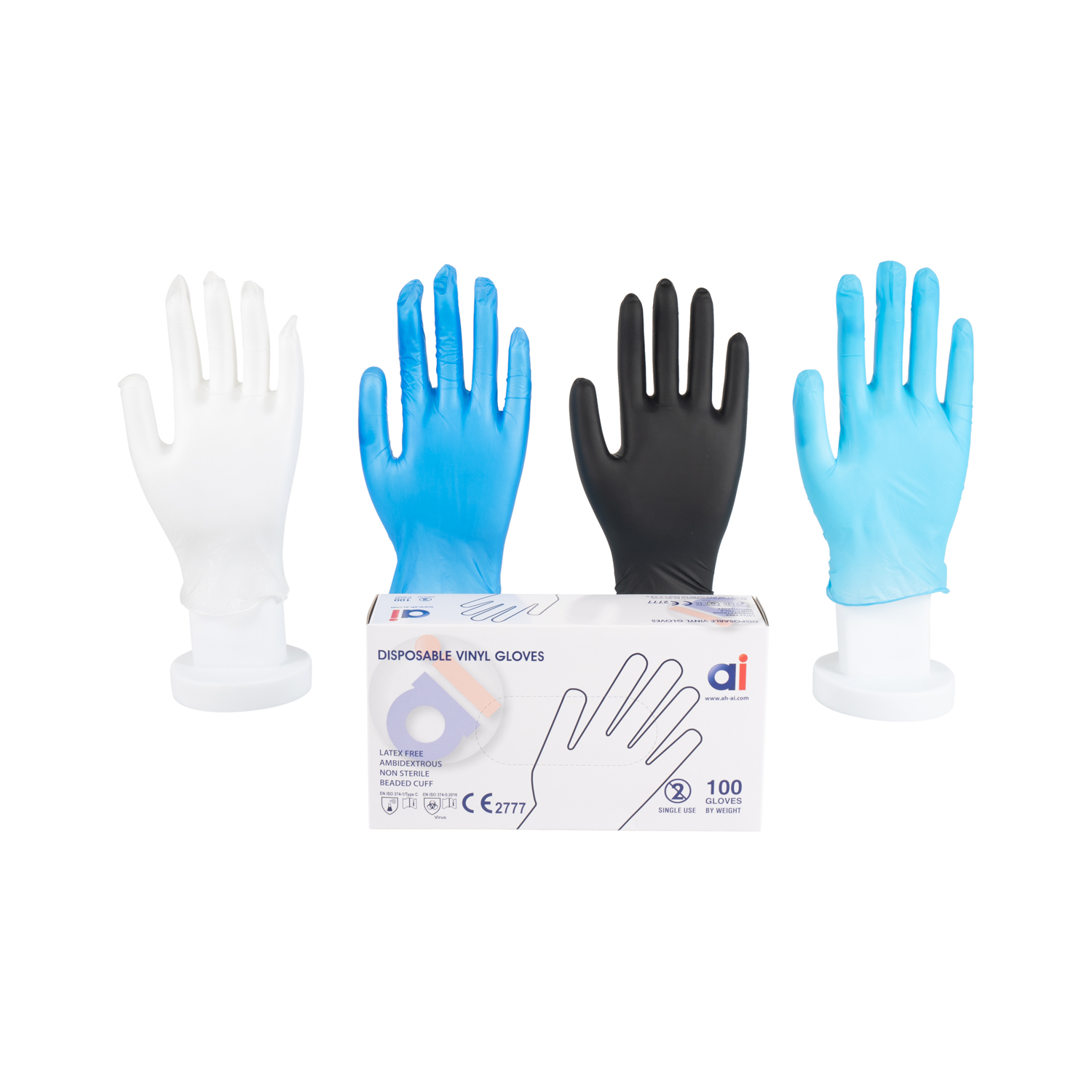- Glove Material:
Latex gloves: Made from natural rubber latex, they offer excellent elasticity, fit, and sensitivity. However, some people may be allergic to latex.
Nitrile gloves: Made from synthetic rubber (butadiene and acrylonitrile), they offer excellent chemical, oil, and tear resistance and are less likely to cause allergies. They are commonly used in hospitals and laboratories.
Vinyl gloves: Made from polyvinyl chloride (PVC), they are less expensive and suitable for those with latex allergies, but may not be as durable or flexible as latex or nitrile gloves.
PE gloves: Made from polyethylene (PE), they are typically lightweight and suitable for food service and general cleaning work.



- Glove Type: Sterile gloves: These are gloves that undergo a special sterilization process to ensure they are completely sterile upon packaging. These gloves are primarily used in situations requiring extremely high hygiene standards, such as medical surgeries and aseptic laboratory procedures, to prevent contamination by bacteria or microorganisms.
Non-sterile gloves: These gloves have not been sterilized. While they may harbor bacteria or microorganisms, these microorganisms are generally harmless in everyday use. Non-sterile gloves are suitable for situations where a strict sterile environment is not required, such as general medical examinations, food handling, and cleaning. - Glove Characteristics:
Powdered gloves: Powdered gloves are coated with a layer of powder, typically talc or cornstarch, during the manufacturing process. This powder helps with glove separation and donning, especially when the hands are wet, as it reduces friction between the glove inner wall and the skin. However, they may not be suitable for certain medical procedures.
Powder-free gloves: These gloves do not contain talc or other powders, reducing the potential for allergic reactions and interference caused by powders. Anti-static gloves: These are personal protective equipment (PPE) used in special environments, primarily to prevent static electricity buildup and discharge, thereby protecting sensitive electronic devices or products from damage.
Acid and Alkali Resistant Gloves: These are PPE designed to protect hands from chemical damage, particularly in work environments involving contact with or handling acidic or alkaline substances. - Glove Functionality:
Tensile Strength: The maximum tensile force a glove material can withstand, reflecting the glove’s durability.
Puncture Resistance: The ability of a glove to resist penetration by sharp objects, crucial for handling sharp objects.
Heat Resistance: The maximum temperature a glove can withstand without damage, making it suitable for use in high-temperature environments.
Breathability: The ability of a glove to allow air and moisture to pass through, affecting its comfort. - Regarding glove safety and measurement units:
Food grade: Suitable for direct food contact without the generation of microorganisms or heavy metals, posing no risk to human health.
Silk: A unit of measurement for glove thickness; the higher the number, the thicker the glove.
Microorganisms: Microscopic organisms invisible to the naked eye, including bacteria, fungi, viruses, and protozoa. They are widely found in nature, including soil, water, air, and within living organisms.
Heavy metals: Metals with a density greater than 5 g/cm³, such as lead, mercury, cadmium, and arsenic.
European standard: EU safety standard.





发表回复